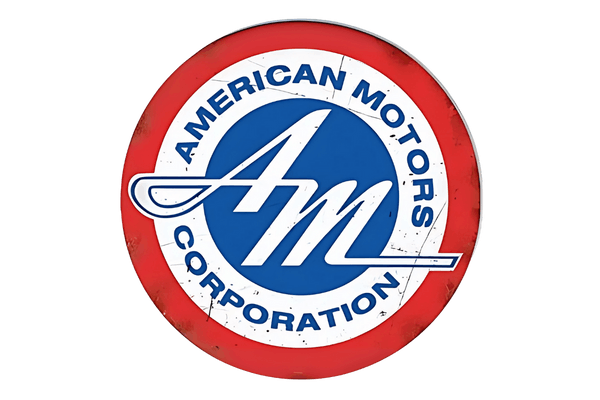
The AMC 4.0L inline-six—later known simply as the Jeep 4.0—isn’t just an engine. It’s the engine for generations of off-roaders. Born from AMC’s 258 lineage and refined under Chrysler’s stewardship, this rugged powerplant powered Jeeps from the late ‘80s into the 2000s with bulletproof reliability, excellent low-end torque, and the kind of mechanical simplicity that gets you home when the trail gets tough.
From Cherokees to Wranglers to Grand Cherokees, the 4.0 became the go-to heart of the Jeep lineup—and it’s still turning tires (and heads) long after production ended.
History & Applications
Debuted: 1987 in the Jeep Cherokee XJ
Roots: Based on the AMC 258 (4.2L) but with a shorter stroke and high-flow head
Jeep Models:
- 1987–2001 Cherokee (XJ)
- 1987–1990 Wagoneer (XJ)
- 1987–1992 Comanche (MJ)
- 1991–2006 Wrangler (YJ/TJ)
- 1993–2004 Grand Cherokee (ZJ/WJ)
Final Year: 2006 (replaced by the 3.8L V6 in the Wrangler JK)
Factory Specs
| Spec | Value |
|---|---|
| Displacement | 242 CID / 4.0L |
| Bore × Stroke | 3.875″ × 3.414″ |
| Rod Length | 6.125″ |
| Compression Ratio | 8.8:1 to 9.2:1 |
| Horsepower (Net) | 173–190 hp @ ~4,600 rpm |
| Torque (Net) | 220–235 lb-ft @ ~3,000–3,200 rpm |
| Valvetrain | OHV, 2 valves/cyl, hydraulic lifters |
| Fuel System | Multi-point EFI |
| Engine Weight (dry) | ~515–525 lbs |
| Firing Order | 1-5-3-6-2-4 |
Design Strengths
- Cast Iron Construction: Built heavy, built to last—resists heat and abuse
- 7-Main Bearing Crankshaft: Bulletproof bottom-end stability
- HO Cylinder Heads: 1991+ castings (7120, 0630, 0331) improved flow dramatically
- MPI Fuel Injection: A massive leap from carburetors—smooth starts, better MPG
- Simple Pushrod Design: No timing belts, no nonsense. Just dependable OHV performance
Off-Road Ready
With peak torque around 3,000 rpm, the 4.0L delivers exactly where trail rigs need it. Whether rock-crawling, towing, or slogging through sand, the engine’s low-end punch and linear throttle response make it the perfect companion for rugged terrain.
Longevity? These engines regularly pass 300,000 miles with basic maintenance—and they don’t mind a little abuse along the way.
Performance & Mods
The 4.0L may be mild on paper, but it has deep potential. Whether you're building a stroker or just looking for a bit more bite, the aftermarket has your back:
| Area | Popular Upgrades |
|---|---|
| Cams | Comp Cams, Crane, or Lunati grinds for trail or torque |
| Stroker Kits | Use a 258 crank + custom pistons for 4.5–4.7L builds |
| Heads | Swap in HO (7120) or avoid early 0331 cracks with replacements |
| Headers | Banks, Borla, or Pacesetter for better flow & sound |
| ECU Tuning | Custom flash tunes help dial in fueling and spark |
4.2L vs. 4.0L — Jeep I6 Showdown
| Feature | AMC 258 (4.2L) | AMC/Jeep 4.0L |
|---|---|---|
| Bore × Stroke | 3.75″ × 3.895″ | 3.875″ × 3.414″ |
| Rod Length | 5.875″ | 6.125″ |
| Intake System | Carbureted | Fuel Injected (MPI) |
| Peak Horsepower | ~115 hp | ~190 hp |
| Peak Torque | ~210 lb-ft @ ~2,000 rpm | ~235 lb-ft @ ~3,000 rpm |
Both engines share the same DNA—but the 4.0 evolved into a more modern, fuel-injected, higher-revving version, while still maintaining the low-end Jeep vibe.
Summary Table
| Spec | Value |
|---|---|
| Displacement | 242 CID / 4.0L |
| Bore × Stroke | 3.875″ × 3.414″ |
| Rod Length | 6.125″ |
| HP Range (Net) | 173–190 hp |
| Torque Range (Net) | 220–235 lb-ft |
| Engine Weight | ~520 lbs |
| Production Years | 1987–2006 |
Legacy
The AMC/Jeep 4.0L isn’t just reliable—it’s iconic. For nearly 20 years, it powered the most capable off-roaders Jeep had to offer. It inspired a generation of DIYers and overlanders, and it’s still out there today—idling at trailheads, climbing rock gardens, and refusing to die.
With basic tools and a little love, the 4.0L just keeps going. No wonder it’s considered one of the greatest American sixes ever built.
Verdict
Simple, strong, and stupidly reliable, the Jeep 4.0L inline-six is the rare engine that truly lives up to its hype. It’s not just the heart of a Jeep—it’s the soul of the off-road lifestyle.
The AMC 4.2L inline-six isn’t just another engine—it’s a cornerstone of Jeep legend. Introduced in 1971 and in production through 1990, this long-stroke straight-six delivered exactly what off-roaders craved: torque down low, bulletproof simplicity, and the kind of ruggedness that laughs in the face of trails and time.
Born from AMC’s second-gen straight-six family, the 258 took the proven 232 and added stroke for more grunt. The result? An engine that became the heartbeat of Jeep CJs, Scramblers, Cherokees, and Wagoneers through nearly two decades of American 4x4 evolution.
History & Applications
Debuted: 1971 model year
Platform: AMC Gen 2 straight-six (shared lineage with the 199 & 232)
Jeep Models:
- CJ-5, CJ-7, CJ-8 Scrambler
- Wagoneer, Cherokee (SJ/XJ)
- J-Series trucks
AMC Cars: Hornet, Gremlin, Concord, and more
Retired: 1990, replaced by the legendary 4.0L HO inline-six
Factory Specs
| Spec | Value |
|---|---|
| Displacement | 258 CID / 4.2L |
| Bore × Stroke | 3.75″ × 3.895″ |
| Rod Length | 5.875″ |
| Compression Ratio | 8.0:1 – 9.2:1 |
| Horsepower (Net) | 100–115 hp @ ~3,200–3,600 rpm |
| Torque (Net) | 190–210 lb-ft @ ~1,800–2,000 rpm |
| Firing Order | 1-5-3-6-2-4 |
| Engine Weight (dry) | ~525–535 lbs (cast iron build) |
| Valvetrain | OHV, 2 valves per cylinder, hydraulic lifters |
| Fuel System | Carter/Motorcraft carbs (1 or 2 bbl) |
Design Strengths
- Long-Stroke Torque: 3.895″ stroke = gobs of low-end twist
- Iron Block & Head: Durable and tolerant to heat, load, and abuse
- 7-Main Bearing Bottom End: Rock-solid crank support
- Simple to Service: Fewer parts, easy wrenching—even on the trail
- Heavy-Duty DNA: Built to last through mud, mountains, and miles
Modding & Performance Potential
Out of the box, the 4.2 wasn’t about horsepower—it was about usable grunt. But there's still room to wake it up:
| Area | Popular Upgrades |
|---|---|
| Induction | Clifford or Offenhauser 4-barrel intakes |
| Fueling | Howell EFI, Mopar MPI, Holley Sniper conversions |
| Ignition | GM HEI distributor swap for more spark |
| Camshaft | Straub Tech hydraulic roller kits now available |
| Cylinder Head | Swap in a 1991+ 4.0L HO head for better flow |
| Stroker Builds | Drop a 4.2 crank into a 4.0 block—build a 4.6L torque machine |
Even mild builds can improve throttle response, MPG, and crawlability—while turbo setups with forged internals have been known to surprise plenty of V8s.
Legacy
The AMC 4.2L was the last true long-stroke American inline-six—until Ford brought the layout back decades later. It passed the torch to the legendary 4.0L HO, and helped shape what Jeep became: dependable, capable, and trail-ready.
Even today, you’ll find these engines powering vintage Jeeps on every continent. Whether it’s bouncing over boulders or climbing logging roads, the 4.2L keeps turning—and keeps earning respect.
Quick Reference
| Spec | Value |
|---|---|
| Displacement | 258 CID / 4.2L |
| Bore × Stroke | 3.75″ × 3.895″ |
| Horsepower (Net) | 100–115 hp |
| Torque (Net) | 190–210 lb-ft |
| Engine Weight | ~530 lbs |
| Production Years | 1971–1990 |
Verdict
The AMC 4.2L I6 wasn’t about revs or racing—it was about getting you there, and back, with torque to spare. Built for the trail and trusted by generations, this engine helped define an era of Jeep performance. It may not be flashy, but in the real world, it flat-out works—and it’s still doing so, decades later.


